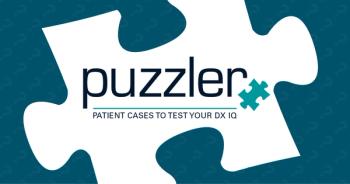
Can you diagnose this 10-year-old with an oozy ear?
He had no prior history of recurrent ear infections, abscesses, or boils. Can you guess the diagnosis?
Welcome to this Contemporary Pediatrics poll. Take a look at the following case below. After reading through the description, choose a multiple-choice answer and try to guess the correct patient diagnosis.
Then visit our website on Wednesday, October 29, 2025, at 12:00 PM EST or later for the full case presentation, differential diagnosis, and correct patient diagnosis.
This case was presented by Jennifer Horton, MD, and Anna Suessman, DO, MED, FAAP.
The case:
A previously-healthy and fully-immunized 10-year-old male presented to an outside Emergency Department for evaluation of one week of left ear pain with itching, drainage, and associated postauricular swelling. The parent reported that the symptoms began after frequent swimming while on vacation and were not relieved by over-the-counter swimmer's ear drops. There was no history of recent trauma or insect bites. He had no prior history of recurrent ear infections, abscesses, or boils. On the day of presentation, the patient reported a mild headache and neck pain, but denied any associated fevers, upper respiratory, or gastrointestinal symptoms. The patient had no significant past medical or surgical history and had no known allergies.
Upon arrival to the Emergency Department, the patient was non-toxic appearing and in no acute distress with normal vital signs for age (HR 97, BP 108/55, T 37.7C, RR 20, and SpO2 100% on room air). Physical examination was notable for proptosis of the left ear and a considerable amount of purulent drainage obstructing visualization of the left tympanic membrane. There was also fluctuant swelling and associated tenderness of the left mastoid without overlying erythema, induration, or warmth (Figure 2).
The patient had bloodwork completed, which was significant for leukocytosis to 15.5 (ref range: 4.5–13.5 103/μL) with a left shift and elevated CRP to 32.8 (ref range: 0.0 - 8.2 mg/L). CBC also demonstrated a normocytic anemia with Hgb 9.3 (ref range: 11.5 – 15.5 g/dL), and CMP was notable for mild hypoalbuminemia of 2.6 (ref range: 3.2 – 4.7 g/dL), but labs were otherwise unremarkable. He was started on empiric IV Ampicillin-Sulbactam (Unasyn). While awaiting transfer to a pediatric facility, the patient underwent a CT temporal bone with/without contrast, which revealed the following (Figure 3).
Below, take your best guess at diagnosing this patient.
What is the diagnosis of this case, based on the information provided?
Newsletter
Access practical, evidence-based guidance to support better care for our youngest patients. Join our email list for the latest clinical updates.










